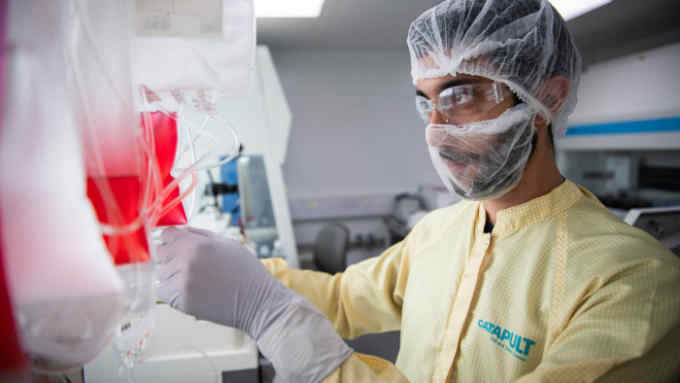Caution: regenerative medicine at a critical juncture

Roula Khalaf, Editor of the FT, selects her favourite stories in this weekly newsletter.
Over the course of my medical career, I have seen the world transform. Certain things I learnt in medical school have been proven false, while other things that seemed simple then have turned out to be far more complex. And some things that are reality today would have then seemed pulled from the pages of science fiction.
Regenerative medicine wasn’t even on the syllabus, the term first being used in 1983. Defined now as “a branch of medicine concerned with developing therapies that regenerate or replace injured, diseased or defective cells, tissues, or organs to restore or establish structure or function,” this broad and evolving field boasts accomplishments that are nothing short of remarkable.
Aiming to fix the root cause of a patient’s condition, rather than just treating the symptoms, physicians today are gaining the knowledge and tools to repair damaged cells and build new body parts. Genes can be modified or introduced into the body to fight or prevent disease; a variety of cell types, such as stem cells, can be administered to patients to grow, replace, or heal tissues; and whole new organs or body components can be generated. It is amazing how rapidly advances in science and technology are being harnessed for the betterment of health.
However, as we break new barriers we must grapple with difficult issues at the intersection of science, economics, access and responsibility.
Very fundamentally, the scientific community, product developers and the regulatory authorities need to work closely together to ensure the safety, efficacy and quality of these novel therapies.
This is not simple or straightforward science. How can we better understand the underlying disease, assess the interventions, and design innovative clinical trials to test the durability and long-term outcomes of treatments? How can we develop and implement manufacturing strategies that allow products to be produced at scale, enable reliable, reproducible manufacturing capacity and are as cost-effective as possible? How can we make sure that healthcare providers and the public receive the clear, accurate information they need to use and assess these new options?
Looming large are concerns about how much regenerative medicine will cost and who is going to pay.
Healthcare systems and insurers are already reeling from some recent product introductions. Few of us would have anticipated million-dollar therapies — close to the pricetag on the first FDA-approved gene therapy for an inherited disease, a treatment for retinal dystrophy, a form of blindness.
Clearly, access to novel therapies matters to patients but should they be bound by the size of their bank accounts?
Yet the reality is that even when a health system or insurer covers the price, one way or another everyone pays, whether in increased premiums, greater costs to the system or higher taxes.
Less obvious is how innovation may suffer if we do not figure out ways to both reduce costs and develop sustainable funding mechanisms. R&D investment may flounder if there is marked uncertainty about who will pay.
As the promise of regenerative medicine gains prominence, we also have to be wary of charlatans cashing in by offering unproven therapies to patients who are in desperate search of treatment.
Rogue stem cell clinics, for example, are rampant around the world. Patients are harmed, their money is wasted and the associated risks to health could undermine confidence in appropriately developed products and support for the field more broadly.
In the arc of medical progress, these are still early days for regenerative medicine. It is a time to take stock of where we are and assess the path forward. The enormous potential for breakthroughs in treatment and care is evident but we must move forward with deliberation and rigour so that society can truly benefit.
The writer is chair of the American Association for the Advancement of Science and former US FDA commissioner

Comments